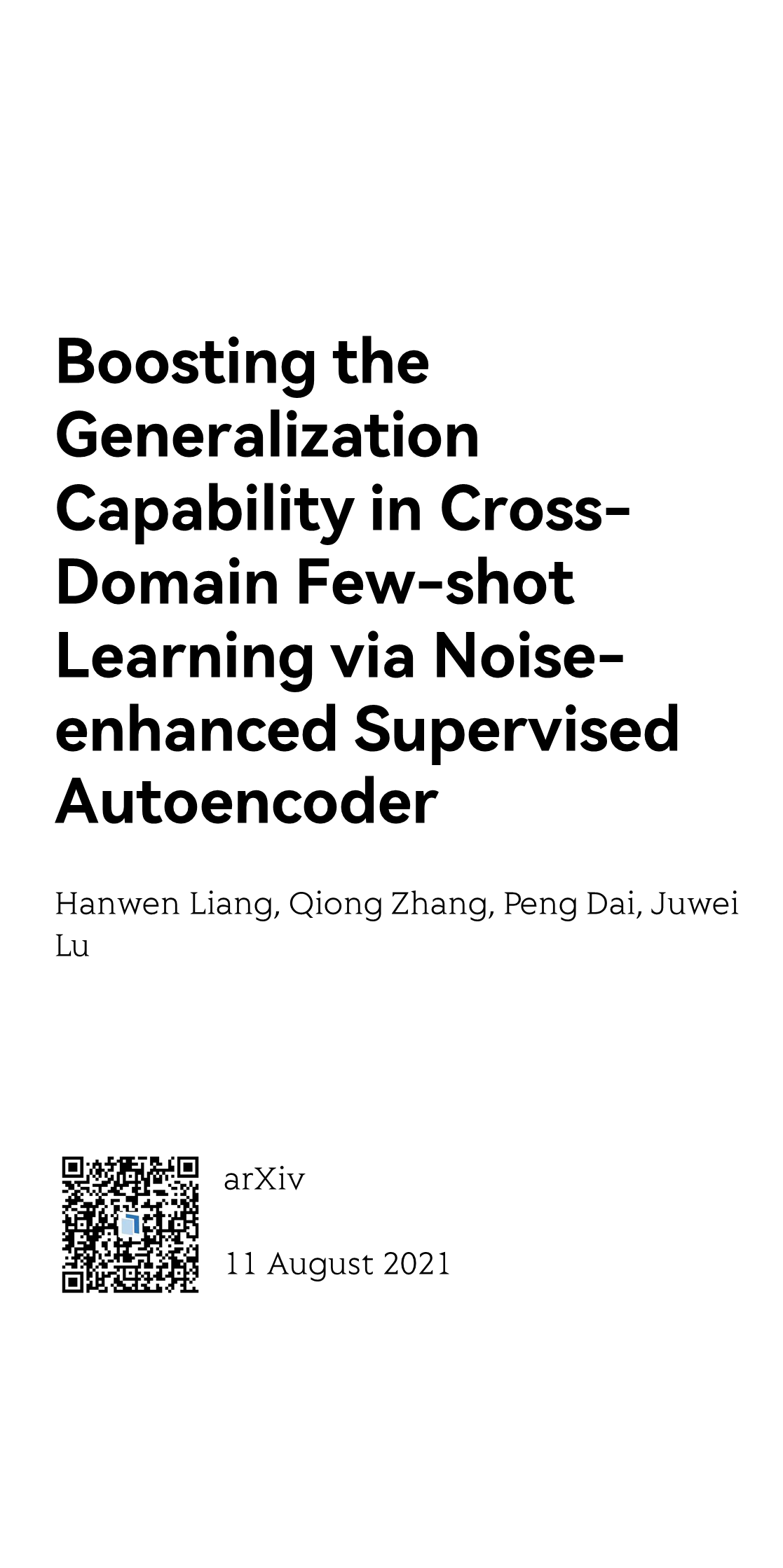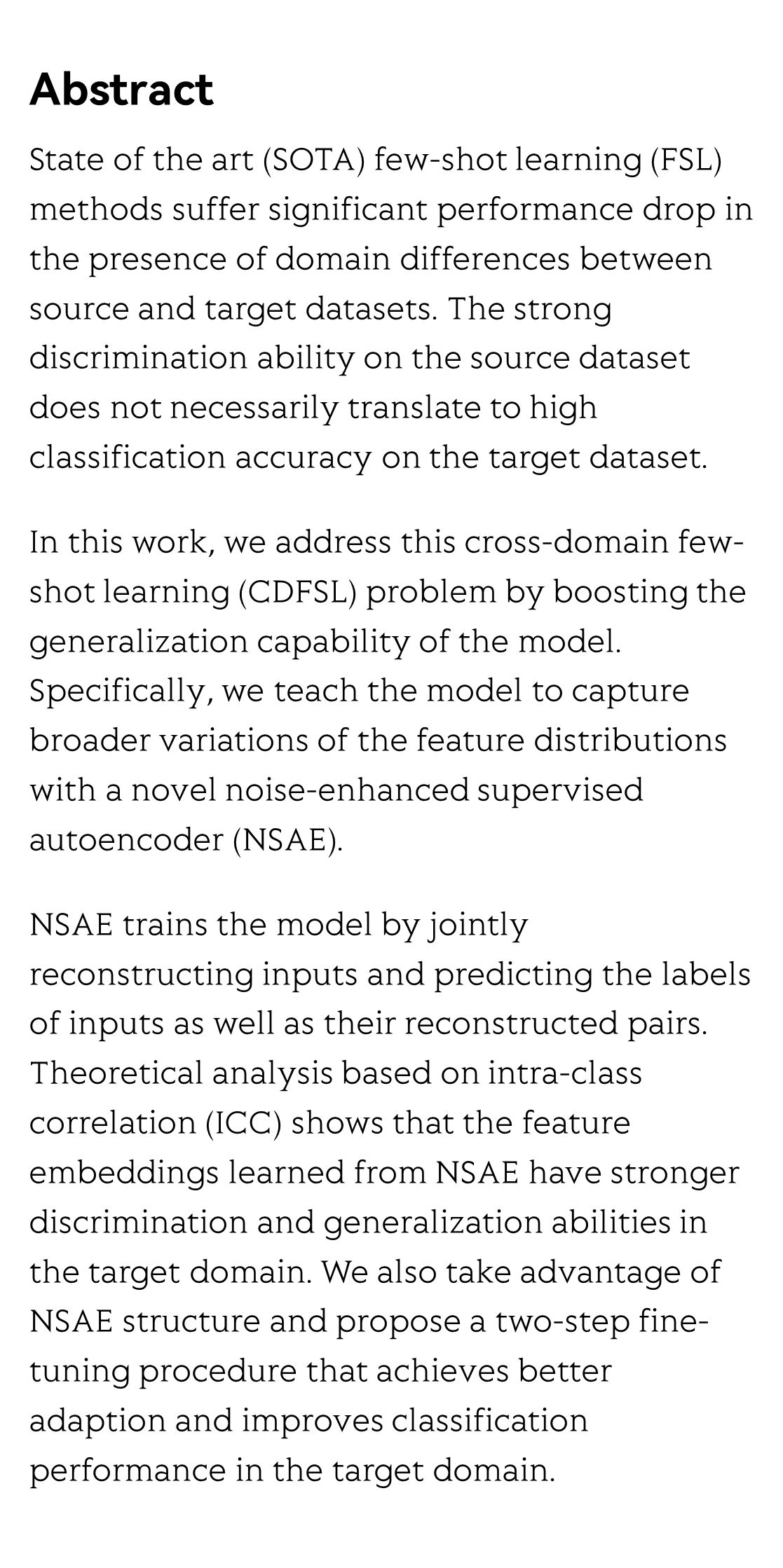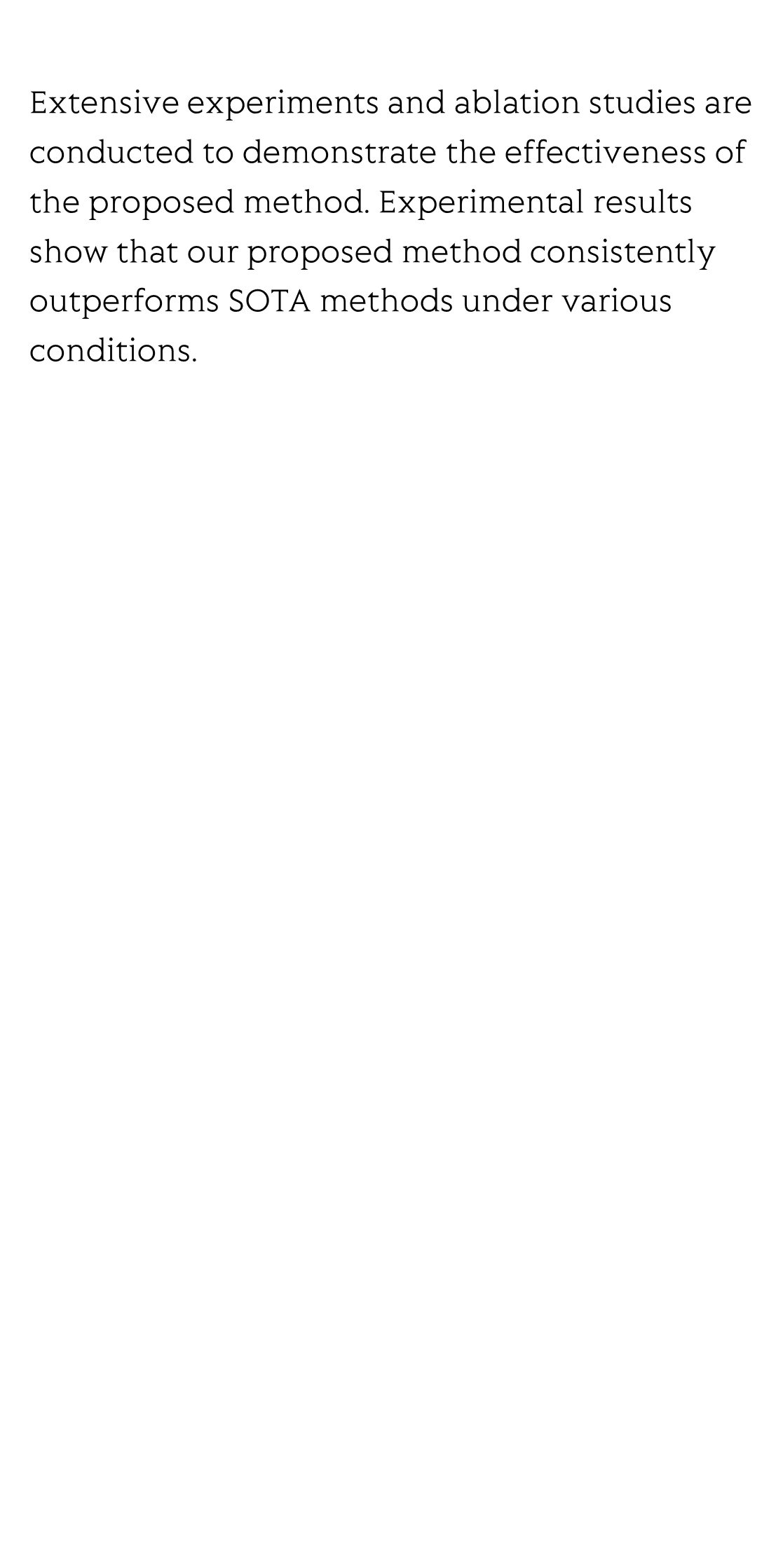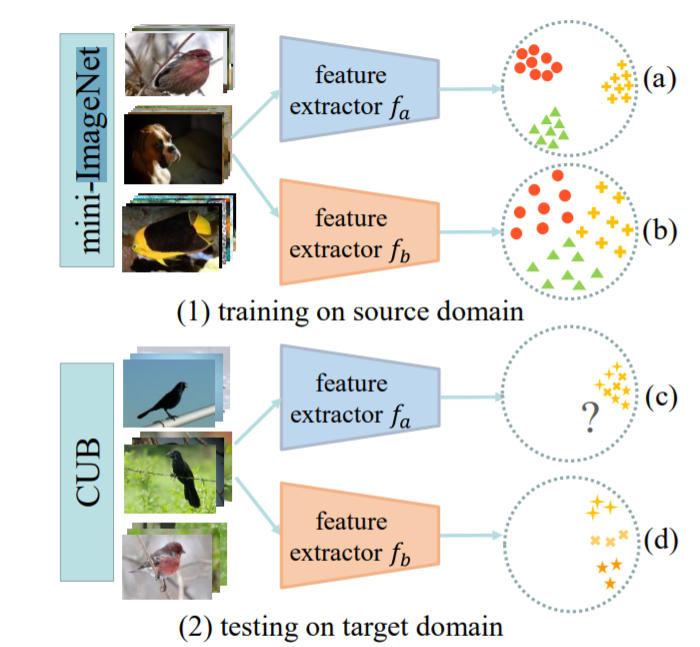Boosting the Generalization Capability in Cross-Domain Few-shot Learning via Noise-enhanced Supervised Autoencoder
利用噪声增强型有监督自动编码器提高跨域Few-Shot学习的泛化能力
騒音増強型を利用して、自動エンコーダを監督し、ドメインを跨ぐFew-Shot学習の一般化能力を向上させる
소음 증강 형 을 이용 하여 자동 인 코딩 기 를 감독 하여 크로스 필드 Few-Shot 학습 의 일반화 능력 을 향상 시킨다
Mejora de la capacidad de generalización del aprendizaje de la tienda de few de dominio cruzado mediante el uso de codificador automático supervisado mejorado por ruido
Amélioration de la capacité de généralisation de l'apprentissage Multi - domaines par l'utilisation d'un encodeur automatique supervisé amélioré par le bruit
Повышение возможностей обобщения в междоменном обучении за несколько шагов с помощью контролируемого автоэнкодера с повышенным шумом
騒音増強型を利用して、自動エンコーダを監督し、ドメインを跨ぐFew-Shot学習の一般化能力を向上させる
소음 증강 형 을 이용 하여 자동 인 코딩 기 를 감독 하여 크로스 필드 Few-Shot 학습 의 일반화 능력 을 향상 시킨다
Mejora de la capacidad de generalización del aprendizaje de la tienda de few de dominio cruzado mediante el uso de codificador automático supervisado mejorado por ruido
Amélioration de la capacité de généralisation de l'apprentissage Multi - domaines par l'utilisation d'un encodeur automatique supervisé amélioré par le bruit
Повышение возможностей обобщения в междоменном обучении за несколько шагов с помощью контролируемого автоэнкодера с повышенным шумом




Reviews and Discussions
